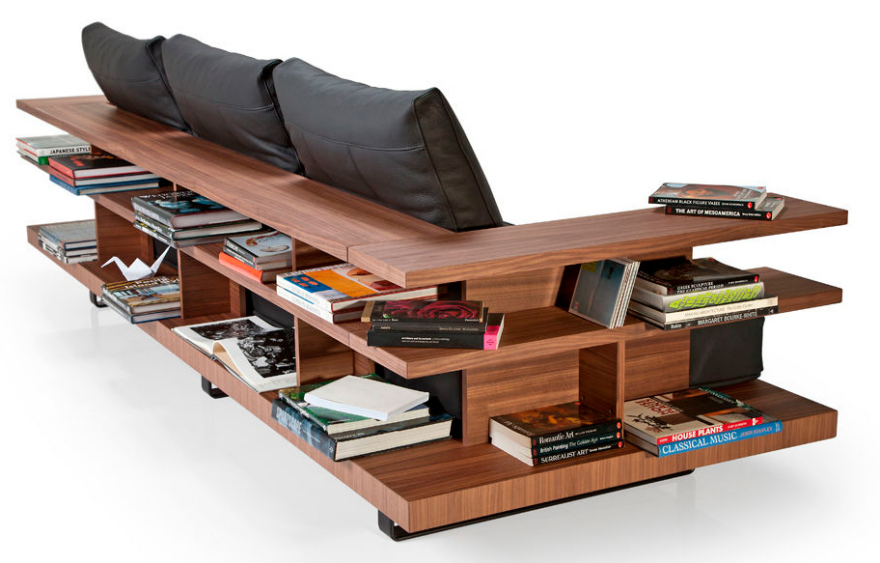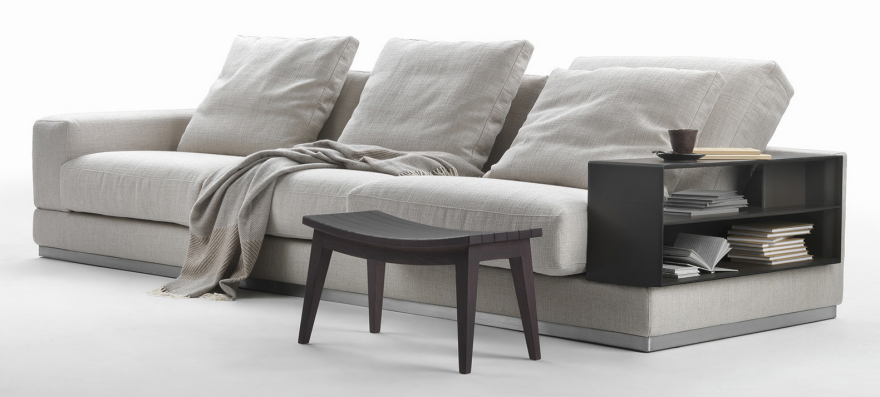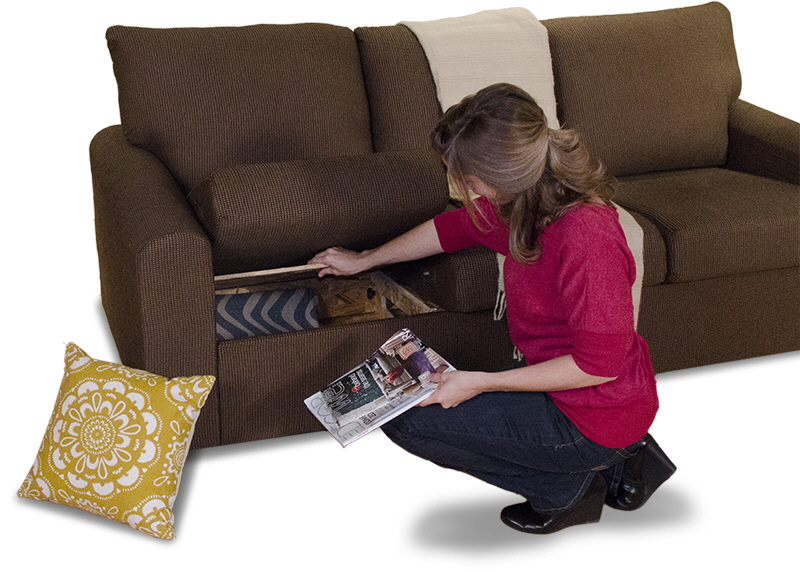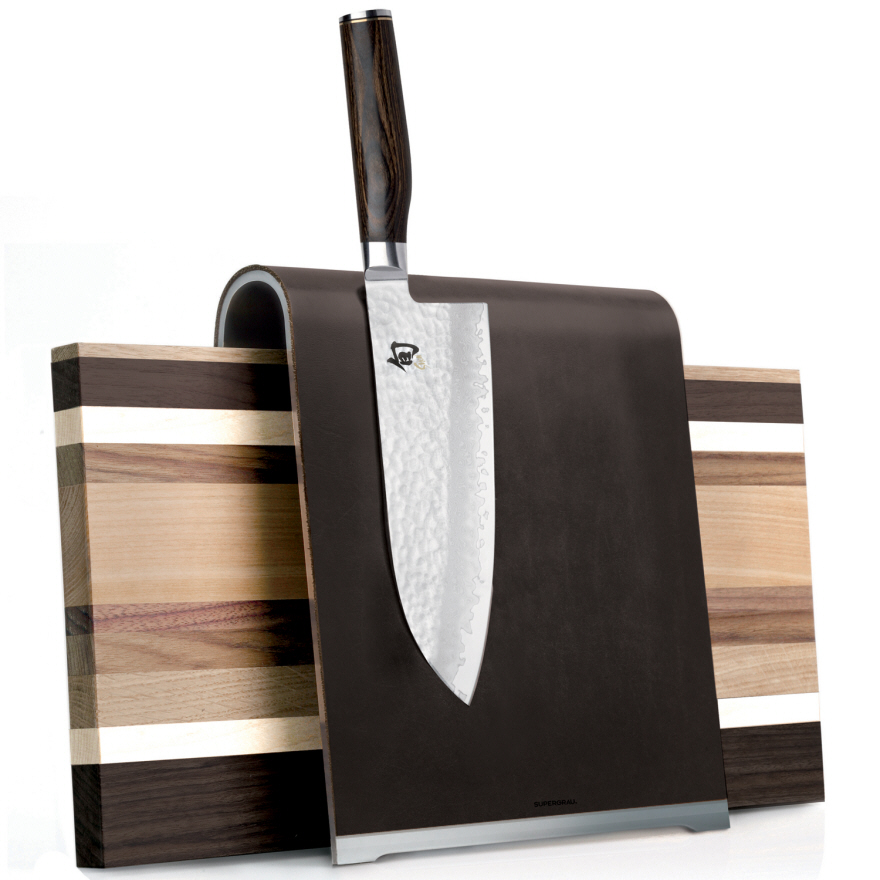Hosted in downtown Los Angeles, the second annual Core77 Conference celebrated many facets of design with the theme, Designing Here/Now. An exploration of the spaces between design disciplines where today's most impactful work is taking place, this year's speakers are changing the very definition of designer. Organized around four central ideas—collaboration now, making now, business now and the future now—the conference was a deep dive into what it means to be creating impactful work in today's competitive landscape.
The speakers presented groundbreaking projects and incredible ideas over the course of the day (check our #Core77Con15) in the dramatic setting of the Vibiana, a former catholic cathedral in the heart of downtown LA. Even if you weren't able to join us for this year's event, here are five transformative lessons designers can put into practice today.
Storytelling 101: Bring Candy!
Storytelling will become even more critical in the age of co-creation and interdisciplinary practice.
![]() Jessie Kawata of NASA JPL working on prototypes for mission design.
Jessie Kawata of NASA JPL working on prototypes for mission design.In Jessie Kawata's presentation about design thinking for space exploration, the creative strategist at NASA's Jet Propulsion Laboratory shared how fundamental tools of design like asking the "what and why" can help engineers and scientists connect ideas and problem solve. In one example, Kawata led a workshop with NASA scientists asking them to prototype ideas for space missions using materials from the 99 cent store. Besides the wonders of pasta propulsion and coffee filter parachutes, the biggest learning from the exercise was that these storytelling opportunities provided a venue for new ideas to be born. Prototyping with mundane objects meant that the scientists weren't as attached to their ideas spurring a brainstorm of far out ideas that could just lead to the next mission innovation. (How did she get these rocket scientists to participate? "Candy helps.")
[Editors Note: For more on design thinking and science, read Jessie Kawata's post, "Is Design Thinking Rocket Science?"]
Sly Lee, a marine scientist, shared the value of the world's coral reefs as well as the challenges facing ocean ecologies. Communicating the urgency of these challenges continues to be a huge hurdle for the scientific community. The Hydrous was founded to, "Make scientific data sexy!" Lee declares. Through 3D imaging tools, The Hydrous is now able to map and 3D print models of coral reef, creating better data sets for scientists to chart growth and development while providing better storytelling tools for the public. By engaging technology, citizen scientists and the scientific community, The Hydrous is working to create open access oceans and storytelling is a key component in accomplishing this mission.
Sly Lee's full presentation for Designing Here/Now
People First
Whether through a community-driven design practice or working on your most important design project (yourself), putting people first in the age of technology can sound pretty radical.
![]() Attendees sketching their heroes as part of Ayse Birsel's first exercise for designing the life you love.
Attendees sketching their heroes as part of Ayse Birsel's first exercise for designing the life you love.The award-winning product designer Ayse Birsel introduced her newest work, a book and workshop that applies her human-centered design practice to life's biggest project—the Self. Design the Life You Love is about creating meaning and purpose through a series of exercises that form the basis of Birsel's client work. Birsel's book and workshop shift the familiar tenets of human-centered design to a self-centered design practice which can be both empowering and transformative.
Process video for manufacturing Brendan Ravenhill's Grain lamp shade in Los Angeles.
Brendan Ravenhill gave the audience a glimpse at what it means to be a designer-manufacturer in Los Angeles. The lighting and furniture designer often works with local manufacturers to produce his work and he argues that the link between the two is more important than a passing trend. "The new designer-maker movement is helping to fill the void of manufacturing jobs going overseas," Ravenhill explains. By putting people first, designers working with local manufacturing in turn supports local economies and allows for a type of co-creation that is beneficial for both parties. Ravenhill's Grain pendant is a prime example of how manufacturing locally can allow for a complexity that wouldn't be able to be achieved by working remotely.
[Editor's Note: Read the Core77 Questionnaire with Brendan Ravenhill on switching from boat building to industrial design, working in Los Angeles and how his bottle opener jump-started his business.]
Whereas Ravenhill's community is driven by production and economics, the fiber artist and designer Tanya Aguiñiga defines community in a broader sense, placing it at the center of her work. Whether its in her woven installations and the relationship with a viewing public (see "Crossing the Line" where she transforms a gallery space into a loom) or in the physical interactions of her felting interventions, Aguiñiga's work explores her own identity and a connection to a broader community—mothers, outsiders, multinationals, women. Designers of all disciplines can learn much from her "craft-centered, local problem solving," approach and the ways that it has not only transformed her work but also the people around her.
[Editor's Note: Read the Core77 Questionnaire with Tanya Aguiñiga on designing outside your own reality and using craft as a way to diversify conversations in society.]
![]() Models of Impact workshop led by Matthew Manos and verynice.
Models of Impact workshop led by Matthew Manos and verynice."What if everyone in the world lived to create a model of impact?" Matthew Manos of the global design consultancy verynice, asks the audience. "What if the $8 billion nonprofits spend on design services could be spent on serving the cause?" Manos has inspired a movement with #GiveHalf, his business case for giving away half your work away for free by taking on probono nonprofit clients. By building in a probono strategy into a consultancy's workflow, "your capacity for projects can grow while your fixed costs stay low," Manos explains. If the success of verynice is any indication, putting people first can be transformative not only for the client, but for the consultancy as well.
[Editor's Note: Read the Core77 Questionnaire with Matthew Manos on Giving Away Half Your Work for Free.]
Mickey McManus rang the alarm in his first book, Trillions, where he described a state of, "unbounded, often malignant, complexity." In his talk, he argued for a "people first" approach as we design the future. Instead of designing an Internet of Things, McManus argues for a "community of things" that can be agile in a rapidly shifting environment. "How does design need to change?" in an age where the intersection of machine learning, digital manufacturing and feedback loops from the Internet of Things demands new and dynamic systems.
Design ecosystems, not products.
As technology and design merge to create complex, more connected and adaptive products, it is more critical to design ecosystems that enable users to create new interactions.
The market is flooded with smart, connected devices that rely on what Mickey McManus, also an Autodesk fellow, identifies as a sea of information. "We'll have to try to create symbiosis between [products]…this will be more like growing a garden or raising children rather than like building products, houses and factories." Being a designer will mean co-creating ecosystems where machine intelligence, data and connectivity must be harnessed.
Google's Advanced Technology and Projects (ATAP) group and Levi's are a great example of the potential for co-creation. The two American companies have partnered to develop Project Jacquard, a system for weaving connected, touch-sensitive textiles, into a commercially-viable denim garment. "Project Jacquard creates a new ecosystem of open source garments," Paul Dillinger, Vice President of Global Product Innovation at Levi's underlined in his talk. "It is not a gadget, it is a platform that adds value in a world of fast fashion."
![]() NewDealDesign's Project Underskin.
NewDealDesign's Project Underskin.Gadi Amit's presentation on technology design took a more concrete approach to designing ecosystems. In his work with wearables, Amit is already creating customized technologies that draw from complex systems of information. Project Underskin, is a new kind of "wearable"—a sensor embedded under the skin that is designed to interface between the body and external cues from the environment or other people.
[Editor's Note: Read the Core77 Questionnaire with Gadi Amit on assimilating technology into society, being 'a very actionable guy,' and his favorite productivity trick.]
![]() Sochi Olympic fountain designed by WET
Sochi Olympic fountain designed by WET Nadine Schelbert, director of design and branding at WET Design gave a powerhouse presentation that shared how their consultancy own every aspect of designing and manufacturing water features for their clients. From precision engineering, custom built simulation software, manufacturing custom designed hardware, Schelbert explained that designing a water feature means designing space, form and performance. "Owning the design, systems, hardware and software development and build give us creative freedom and pushes boundaries," Schelbert told the audience. The workings of WET's interdisciplinary design practice is a great case study for developing robust ecosystems of the near future.
MAYA: Most Advanced Yet Acceptable
Raymond Loewy's principle of "Most advanced yet acceptable," continues to be a guiding touchstone for designers. In our current age of rapidly shifting paradigms and new technologies, the concept of MAYA can help navigate some of the more thorny ethical and business questions posed to designers today.
Can collaboration be competitive? Core77 contributor and vice president of design at Sonos, Tad Toulis, made the case for creating an internal culture that encourages designers to "challenge assumptions and push people" in order to deliver something truly good. In a 2011 essay for Core77, Toulis made, "The Case for Competitive Competition," and at this year's Core77 Conference he revisited the idea and reminded the attendees of the power of deep engagement, prototyping ideas, embracing ambiguity, pushing people and most of all, humility. "Explain, explain, explain," Toulis encourages. "Maybe you'll find what the project is REALLY about instead of what you thought it was about."
![]() Tesla Model S, 2013
Tesla Model S, 2013In Javier Verdura's talk with CARLAB's Eric Noble, the Tesla director of product design reiterated the importance of balancing advanced technologies with the demands of business and consumer expectations. Unique to the industry, Tesla positions itself as both an automotive manufacturer and an energy storage company. The responsibility of the designer is delivering on the brand promise of a luxury, forward-thinking vehicle while also honoring the vision of its founder, Elon Musk. "When people hear the Tesla brand," Verdura explains, "they already think, 'That is so cool.' My goal is for them not to be let down by anything else they touch."
![]() Teddy Ruxpin designed by RKS
Teddy Ruxpin designed by RKS![]() Belkin Charge Dock for Apple Watch + iPhone by Pip Tompkin Studio
Belkin Charge Dock for Apple Watch + iPhone by Pip Tompkin StudioPip Tompkin (Pip Tompkin Studio) and Ravi Sawhney (RKS Design) discussed the business of running an ID consultancy with Core77 contributing writer Rebecca Veit. In their wide-ranging conversation, the two industry veterans discussed the delicate dance between clients and consultancy. On one hand, the business world, "understand the value of design," Sawhney told the audience. "They know they need design, they just don't know how to get there." On the other hand, "design encourages risk," Tompkin cautioned. Oftentimes risk-adverse business can be "truly frightened by design." Savvy consultancies must balance the demands of the client, hire balanced interdisciplinary teams and stay ahead of the market to thrive in this environment. Loewy's axiom seems especially prescient in today's competitive landscape.
Think Wrong
Unconventional ways of thinking and problem solving are extremely valuable (and can be taught) in a fast-moving and agile market.
John Bielenberg is a pioneer in social impact design. Since founding Project M, a program to engage young designers in social impact work, Bielenberg has gone on to form COMMON, the world's first collaborative brand, with Alex Bogusky and more recently the Silicon Valley innovation firm Future Partners. In his years of experience working with young designers and entrepreneurs, he's come to the conclusion that "thinking wrong" is the fastest track to finding ideas that matter and Future Partners is on a mission to share and teach the thinking wrong methodologies. The six tenants of the process include:
• Be Bold
• Get Out
• Let Go
• Make Stuff
• Bet Small
• Move Fast
![]() Website for Kenzo x Blue Marine Foundation by OKFocus
Website for Kenzo x Blue Marine Foundation by OKFocus![]() NJ(LA)
NJ(LA)If Bielenberg's success isn't convincing, the conversation between Ryder Ripps (OKFocus) and Nicole Jacek (NJ(L.A.)) offered a glimpse into the unconventional methodologies their consultancies use for creating powerful work for companies like Nike, Red Bull, Kenzo, Good Magazine and Adobe. "There is a lot of room to divert from the template," Ripps responds when asked about the work being labelled weird. "Being 'weird' is survival." Jacek's work relaunching GOOD magazine has helped reposition the beloved publication and online community for a new print audience that is fluent in the language of digital culture. She notes that a number of corporations are taking cues from agencies like hers by establishing internal departments dedicated to trying new things.
Thanks to everyone who made Designing Here/Now a huge success! For more information and scenes from the conference, check out the full Core77 Conference 2015 photo gallery!
![]()

































































































